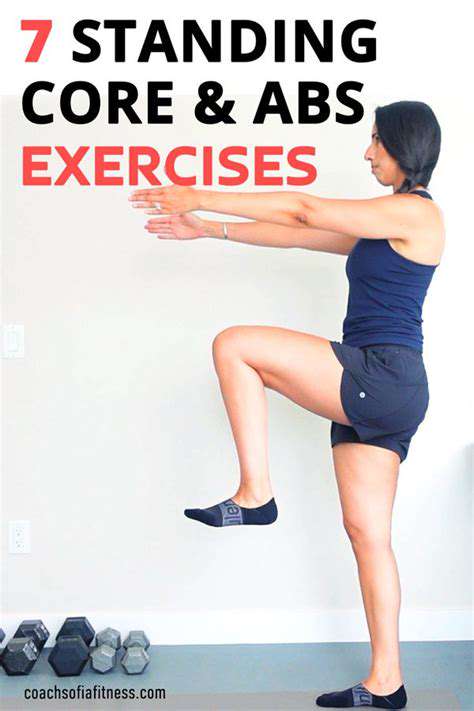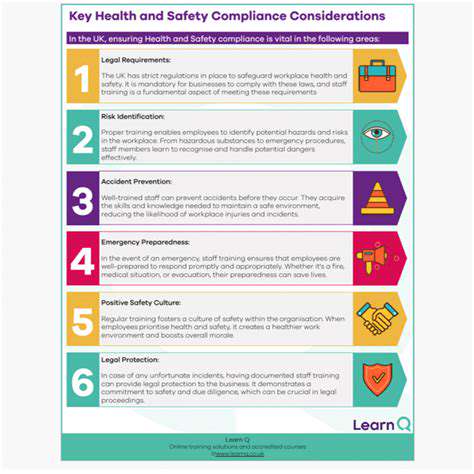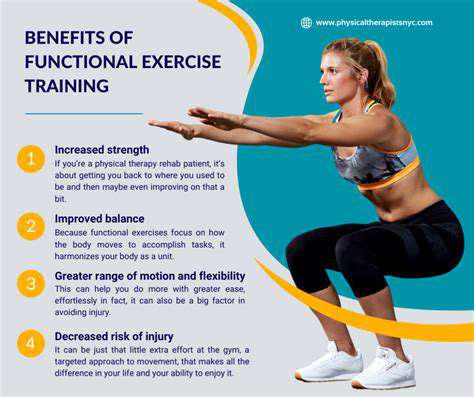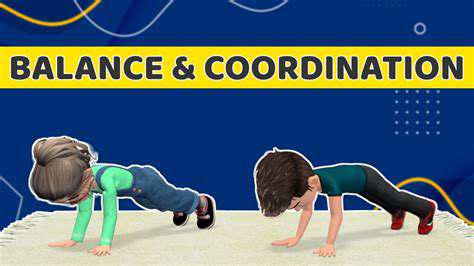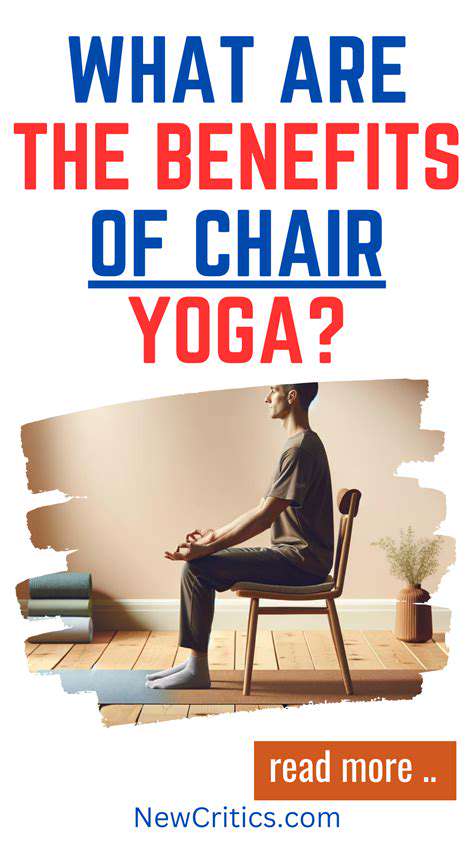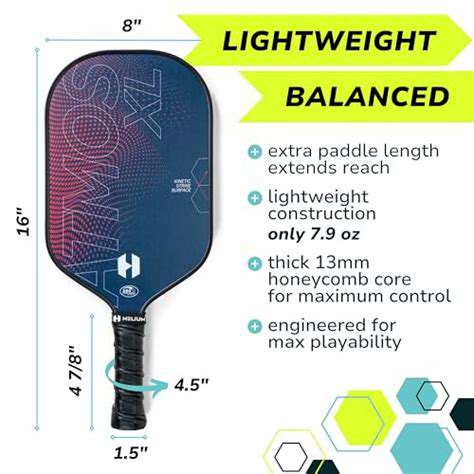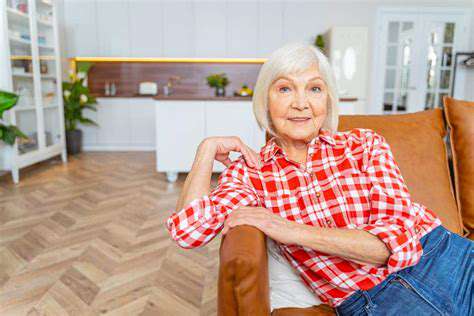10 Chair Yoga Poses for Seniors with Limited Mobility
Correct alignment forms the foundation of chair yoga. Sit upright with your back lightly touching the chair backrest, maintaining the spine's natural curves. Relax your shoulders and keep your head balanced directly above your spine. Practice mindful breathing throughout your session - inhale deeply through your nose, expanding your ribcage, then exhale slowly through pursed lips to release bodily tension.
Chair Yoga Poses for Balance and Flexibility
The practice includes various seated positions designed to enhance stability and range of motion. Controlled movements like slow leg extensions, arm rotations, and gentle torso twists effectively target multiple muscle groups while protecting vulnerable joints. These exercises gradually build confidence in movement and spatial awareness.
Gentle Stretches for Improved Mobility
Chair yoga incorporates therapeutic stretches that reduce stiffness and increase joint mobility. Forward bends, lateral stretches, and controlled neck movements help alleviate muscle tightness while improving spinal and limb flexibility. These movements prove especially valuable for seniors experiencing regular joint discomfort or reduced range of motion.
Strengthening Exercises for Enhanced Stamina
While often associated with flexibility, chair yoga also includes muscle-building components. Gradual arm extensions, controlled leg raises, and isometric contractions develop strength without joint stress. These exercises noticeably boost endurance, making daily activities easier to perform.
Mindfulness and Meditation in Chair Yoga
Chair yoga transcends physical exercise by incorporating mindfulness techniques. By focusing attention on breath patterns and bodily sensations during each movement, practitioners cultivate present-moment awareness. This meditative approach helps alleviate stress, sharpen concentration, and promote emotional balance - creating a holistic wellness practice.
Chair Forward Fold
Chair Forward Fold: Benefits
This accessible pose offers multiple advantages for seniors, particularly those with movement limitations. The seated forward bend gently elongates hamstring, hip, and spinal muscles while minimizing fall risks. Regular practice can alleviate stiffness and improve flexibility - common concerns among older adults. Additionally, the pose induces relaxation and may aid circulation and digestion. The spinal elongation can provide mild relief from back discomfort.
Chair Forward Fold: Step-by-Step Instructions
Sit upright with feet flat and hip-width apart. Inhale deeply, then exhale while hinging forward from the hips, maintaining a straight back. Reach toward your feet or shins without rounding the shoulders. Hold for 30-60 seconds with steady breathing, then slowly return to upright position.
Modifications for Limited Mobility
For those needing assistance, loop a yoga strap or towel around the feet to gently deepen the stretch. Adjust chair height to maintain proper knee alignment. Individuals with balance concerns can perform the pose while holding the chair arms for stability.
Chair Forward Fold: Precautions
Discontinue immediately if pain occurs. Avoid this pose with serious neck or back injuries. Those with hypertension should consult their physician before attempting. Gradually increase stretch duration as flexibility improves.
Chair Forward Fold: Combining with Other Poses
Pair this stretch with gentle spinal twists or seated backbends for a comprehensive mobility sequence. Integrating multiple chair poses creates balanced, full-body workouts.
Chair Forward Fold: Mindfulness and Breathwork
Focus on diaphragmatic breathing during the stretch. Deep inhalations oxygenate muscles while slow exhalations promote tension release. This mindful approach amplifies the pose's relaxing effects.
Modern vehicles with Advanced Driver-Assistance Systems (ADAS) rely on sophisticated sensor networks that function as the vehicle's sensory apparatus. These systems continuously monitor surroundings, collecting essential data about objects, traffic flow, and road conditions. Visual recognition systems employ cutting-edge software to identify and track vehicles, pedestrians, and cyclists - capabilities fundamental for lane monitoring, adaptive speed control, and collision avoidance features. Automakers implement diverse camera configurations with varying specifications to ensure consistent performance across different environmental conditions.
Chair Cat-Cow Pose
Chair Cat-Cow Pose Benefits
This fluid spinal movement gently mobilizes the vertebral column while reducing tension in the upper body. The alternating arching and rounding motions improve spinal flexibility and posture - critical factors for fall prevention. The synchronized breathing pattern promotes relaxation and mental clarity.
Chair Cat-Cow Pose Instructions
Sit with feet flat and hands on thighs. Inhale while arching the back (cow position), then exhale while rounding the spine (cat position). Repeat 5-10 times, moving fluidly with your breath.
Modifications for Limited Mobility
Reduce range of motion as needed. Use chair armrests for support if required. Focus on quality of movement rather than depth.
Chair Cat-Cow Pose and Posture
The pose strengthens postural muscles while increasing spinal mobility. Regular practice helps counteract the forward slump common in seniors.
Chair Cat-Cow Pose and Breathing
Coordinated breathing enhances the pose's stress-reducing benefits. Deep inhalations oxygenate tissues while complete exhalations release muscular tension.
Chair Leg Stretches
Chair Leg Stretches
Seated leg stretches maintain lower body flexibility with minimal joint stress. Consistent practice improves circulation and reduces stiffness. Hold each stretch 15-30 seconds without bouncing.
Hamstring Stretch
Extend one leg while keeping the foot flexed. Lean forward slightly from the hips to feel the stretch along the back thigh.
Quadriceps Stretch
Gently pull one foot toward the buttocks while keeping knees aligned. Maintain upright posture throughout.
Inner Thigh Stretch
Cross one ankle over the opposite knee and gently press down on the raised knee.
Calf Stretch
Keep one heel grounded while leaning forward to stretch the lower leg muscles.
Foot and Ankle Stretches
Rotate ankles and flex/point toes to maintain joint mobility in the lower extremities.

